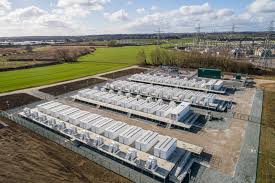The Consumer Revolution of Battery Energy Storage Systems (BESS) is transforming how individuals and businesses consume and interact with energy, fundamentally reshaping the dynamics of the electricity market and driving a shift towards more decentralized and sustainable energy systems. This revolution is characterized by several key developments and trends:

1. Empowerment of Consumers
Consumers are transitioning from being passive purchasers of electricity to active participants in the energy market. With BESS, households and businesses can store excess energy generated from rooftop solar panels during the day and use it during peak hours or when the sun is not shining. This not only reduces reliance on the grid but also enables consumers to manage their energy consumption more efficiently and reduce their electricity bills.
2. Increased Energy Independence
BESS provides a pathway for consumers to achieve greater energy independence. By utilizing stored energy during times of grid outage or when grid-supplied electricity is expensive, consumers can maintain their power supply and protect themselves against price fluctuations and potential disruptions. This has significant implications for regions with unreliable power infrastructure or those prone to natural disasters.
3. Participation in Demand Response Programs
Demand response programs incentivize consumers to reduce or shift their electricity use during peak demand periods. BESS enhances the ability of consumers to participate in these programs by allowing them to rely on stored energy instead of reducing consumption. This not only benefits the grid by alleviating strain during peak times but also provides financial rewards to participants.
4. Facilitation of Peer-to-Peer (P2P) Energy Trading
Advancements in blockchain and smart grid technologies are enabling new models of energy trading, where consumers can buy and sell electricity among themselves without the need for traditional utility intermediaries. BESS is crucial in this model, as it allows consumers to store excess energy generated and sell it to neighbors or the grid, turning residential and commercial buildings into mini power plants.
5. Enhanced Use of Renewable Energy
By mitigating the intermittency issues associated with renewable energy sources, BESS encourages more consumers to invest in solar and wind power solutions. This not only reduces carbon footprints but also supports the transition towards a more sustainable energy system.
6. Evolution of Energy Markets
The widespread adoption of BESS is driving changes in energy market structures and regulations. New tariff models, incentives for energy storage, and regulations are being developed to accommodate and encourage the use of BESS at the consumer level.
7. Technological Innovation and Cost Reduction
The consumer revolution is further fueled by ongoing technological advancements in battery storage, which are making these systems more efficient, reliable, and affordable. As the costs of batteries continue to fall, more consumers are able to invest in BESS, accelerating the adoption rate.
8. Enhanced Grid Services and Support
On a larger scale, consumer-level BESS contributes to grid stability and efficiency by providing ancillary services such as frequency regulation and voltage support. This collective capability of distributed energy storage systems can significantly reduce the need for traditional, centralized grid support mechanisms.
The consumer revolution in battery energy storage is paving the way for a more democratized, resilient, and sustainable energy landscape. As this revolution progresses, it will continue to challenge traditional energy business models, drive regulatory and market changes, and open up new opportunities for innovation and environmental sustainability.
